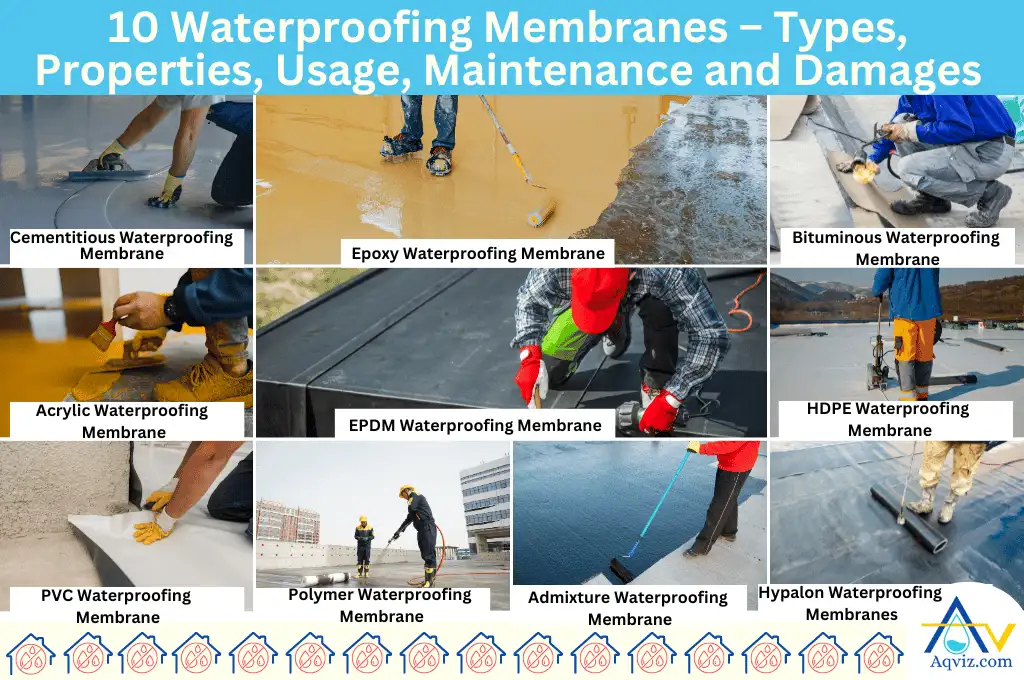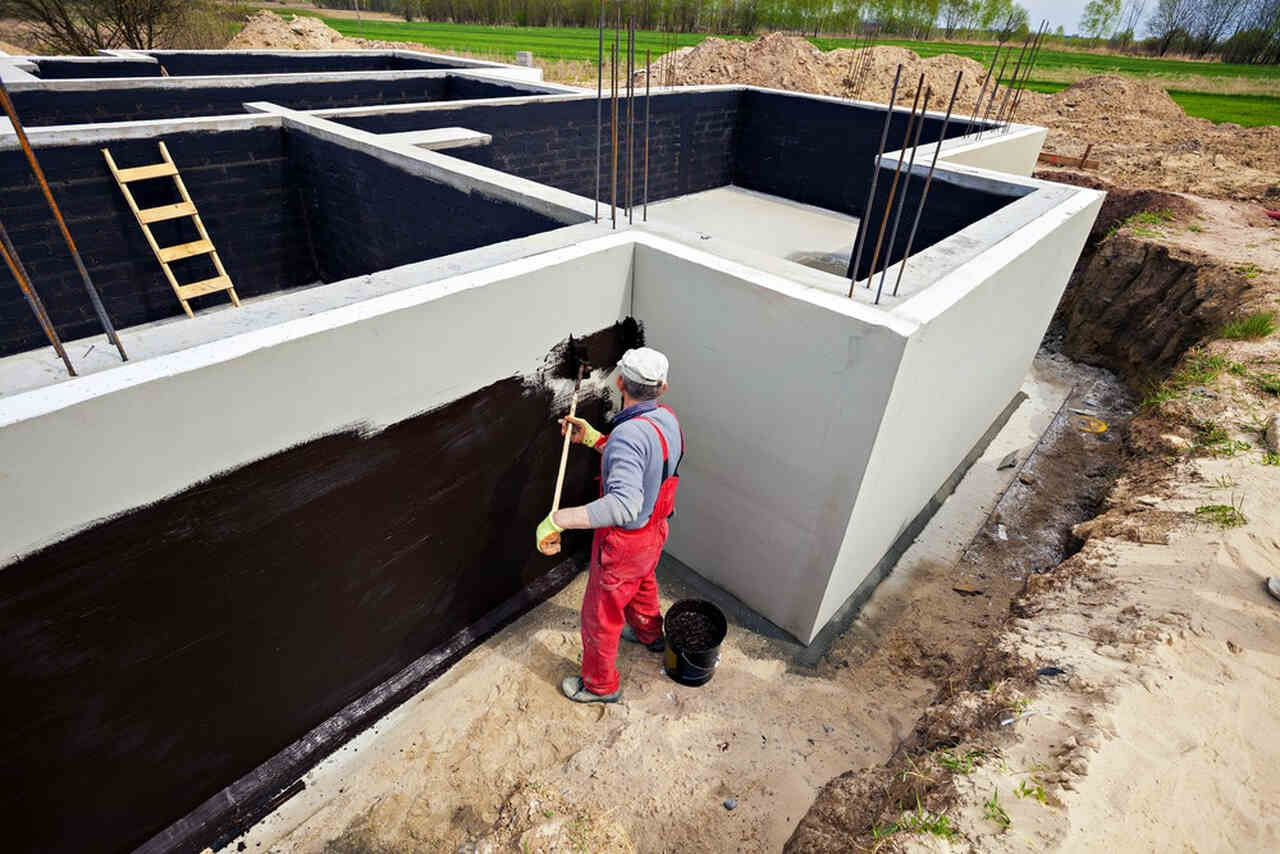Why Water Solutions Omaha Matters for Structural Safety
Wiki Article
Just How Waterproofing Functions: A Detailed Check Out Techniques and Technologies
Waterproofing is vital for shielding structures from moisture-related damage. It includes different methods and technologies that create obstacles against water breach. Standard methods, such as compacted clay, coexist with contemporary developments like liquid-applied membrane layers. Comprehending the subtleties of these methods is vital for reliable application. The effectiveness of any waterproofing solution pivots not just on the techniques used yet also on continuous maintenance and inspection. What are the vital variables that influence lasting efficiency?Understanding the Essentials of Waterproofing
Waterproofing is a necessary process that protects frameworks from water breach, which can result in significant damages in time. This approach includes the application of various materials and methods created to produce an obstacle versus moisture. The primary objective is to stop water from passing through surface areas, which can create deterioration, mold and mildew growth, and architectural instability.Various factors influence the option of waterproofing approach, including the kind of structure, its location, and environmental problems. Comprehending the physics of water activity and the homes of various materials is important in selecting a reliable waterproofing solution.Effective waterproofing not just safeguards structures but additionally boosts their long life and honesty. Typically, it is integrated into the design phase of construction to ensure detailed protection. As understanding of water-related concerns expands, the value of comprehending waterproofing principles comes to be significantly clear to designers, building contractors, and home owners alike.Traditional Waterproofing Techniques
Conventional waterproofing methods have been utilized for centuries, relying upon tried and true techniques and materials to secure structures from water damages. One of the earliest methods includes using clay, which, when compressed, produces a natural obstacle against moisture. In addition, bitumen, a sticky, black product stemmed from oil, has actually been utilized for its waterproof residential or commercial properties, typically applied to roof coverings and foundations.Another method involves the application of lime-based plasters, which supply a breathable layer that enables wetness to get away while stopping water access. Thatch roofing, a conventional method still seen in some cultures, provides outstanding waterproofing because of its securely packed straw layers.Moreover, the usage of stone and block has been prominent, as these products are inherently resistant to water when properly set up. Overall, conventional waterproofing approaches stress the value of selecting proper materials and building practices to enhance resilience against water intrusion.Modern Waterproofing Technologies
Innovations in contemporary waterproofing modern technologies have revolutionized the way structures are shielded from water damage. Innovative methods such as liquid-applied membrane layers and sophisticated sealers have improved the efficiency and convenience of waterproofing solutions. These innovations enable seamless application, decreasing the danger of leakages and making certain comprehensive protection over complicated surfaces.Moreover, the combination of clever modern technologies, such as moisture sensors and automated monitoring systems, enables real-time assessment of waterproofing performance. This aggressive approach assists in prompt maintenance and decreases lasting fixing costs.Additionally, developments in spray-applied layers provide quick application and superb adhesion, adapting to various substrates while providing durable defense. Strategies like polymer-modified systems further improve versatility and longevity, making them ideal for varied settings. Overall, contemporary waterproofing modern technologies not just alleviate water invasion however additionally add to the long life and sustainability of structures, marking a considerable change in the industry.Products Used in Waterproofing
The efficiency of waterproofing solutions heavily relies upon the materials used in their application. Different materials are employed to create obstacles against water access, each with special properties fit for different settings. Frequently utilized products include membrane layers, finishings, and sealants.Liquid-applied membranes, commonly made from polyurethane or acrylic, form a smooth barrier that adjusts to complex surface areas. Sheet membranes, usually constructed from rubber or thermoplastic, deal resilience and are excellent for larger areas. In addition, cementitious waterproofing products, composed of cementitious compounds, supply excellent bond and flexibility.Sealants made from silicone or polyurethane are essential for joints and seams, guaranteeing extensive protection. Additionally, sophisticated materials, such as geo-composite membranes, combine several features, enhancing performance. Generally, the selection of waterproofing materials is crucial in achieving resilient and efficient water resistance, tailored to certain job requirements and environmental conditions.
Typical Applications of Waterproofing
Waterproofing plays a crucial duty in different industries, making certain the longevity and honesty of frameworks. Usual applications consist of household solutions that shield homes, business framework that safeguards companies, and commercial setups that require robust security versus moisture. Comprehending these applications highlights the value i was reading this of waterproofing in maintaining both security and functionality across different atmospheres.Residential Waterproofing Solutions
Several home owners encounter obstacles with dampness breach, making efficient property waterproofing options important. Different methods exist to address this concern, consisting of exterior and interior waterproofing systems. Interior options commonly include the application of sealants and coatings to cellar wall surfaces, which assist avoid water infiltration. Outside techniques usually include the installment of drain systems and water resistant membrane layers that draw away water away from the foundation.Additionally, homeowners might think about sump pumps to remove water buildup and dehumidifiers to manage moisture levels. Correct grading and making use of gutters additionally play a crucial role in taking care of water circulation around the home. By carrying out these techniques, homeowners can substantially minimize the risk of water damage and mold and mildew growth, making certain a completely dry and risk-free living atmosphere.
Commercial Facilities Defense
Effective waterproofing services play an important duty in the protection of commercial facilities. Sump pump installation & replacement Omaha. These methods are vital for protecting buildings, parking structures, and bridges from water damage, which can jeopardize structural stability and result in pricey repair work. Usual applications consist of the setup of membranes, finishings, and sealants that create barriers against wetness seepage. Locations such as basements, roofings, and exterior walls are commonly prioritized to guarantee long life and longevity. Furthermore, waterproofing systems can enhance power performance by preventing water-related concerns that may lead to mold growth and degeneration. By executing durable waterproofing procedures, residential or commercial property owners can shield their investments and maintain operational performance, ultimately adding to the overall sustainability of industrial centersIndustrial Applications Introduction
While different fields face distinct challenges, the need for dependable waterproofing options remains a consistent in industrial applications. Industries such as manufacturing, building, and power often encounter environments where moisture exposure can threaten architectural honesty and functional effectiveness. In making centers, waterproofing is vital for securing machinery and materials from water damages. In building and construction, it safeguards structures and basements versus groundwater infiltration. The energy industry relies upon waterproofing for the security of devices in hydroelectric plants and offshore structures. Furthermore, food handling markets make use of waterproofing to assure health and conformity with safety and security criteria. In general, effective waterproofing services are necessary for enhancing waterproof sellotape sturdiness, safety, and productivity throughout various industrial settings.
Maintenance and Durability of Waterproofing Solutions
Although waterproofing options are developed to supply long-term security versus wetness invasion, regular maintenance is vital to assure their efficiency and long life - Sump pump installation & replacement Omaha. Routine examinations play a substantial function in identifying potential concerns such as fractures, peeling, or indications of water damage. Resolving these problems immediately can protect against further damage and costly repairs.Additionally, cleaning up the surface area of waterproofed areas assists eliminate dust and particles that could jeopardize the integrity of the waterproofing obstacle. It's additionally a good idea to reapply safety coverings or sealers as advised by producers to maintain suitable efficiency. Ecological factors, such as UV exposure and extreme weather, can affect the life expectancy of waterproofing products, making regular assessment importantOften Asked Concerns
Can Waterproofing Be Applied in Cold Climate?
The inquiry of using waterproofing in winter raises issues regarding bond and treating. Lots of items might not perform at their best in low temperatures, necessitating careful selection and consideration of specific guidelines for efficient application.For How Long Does Waterproofing Usually Last?
The duration of waterproofing efficiency varies based on materials and ecological variables. Usually, it can last from 5 to 10 years, yet regular upkeep and inspections are important to assure peak efficiency and long life.Is Do It Yourself Waterproofing Effective and Safe?
The effectiveness and safety of do it yourself waterproofing rely on various factors, consisting of worldly top quality and application method. While some individuals attain sufficient results, others might come across problems that jeopardize lasting defense and structural integrity.What Are the Signs of Failing Waterproofing?
Indications of falling short waterproofing include noticeable water discolorations, peeling off paint, mold development, moldy odors, and click to find out more wetness in wall surfaces or ceilings - Yard drainage Omaha. These signs suggest endangered obstacles, necessitating prompt assessment and possible removal to stop more damageHow Do I Choose the Right Waterproofing Professional?

Report this wiki page